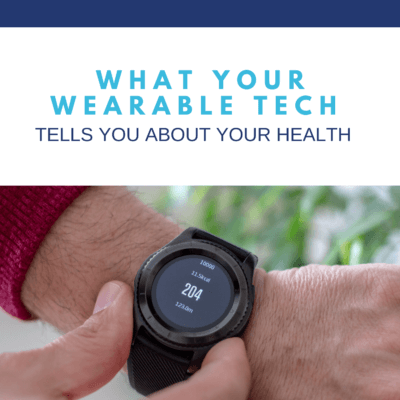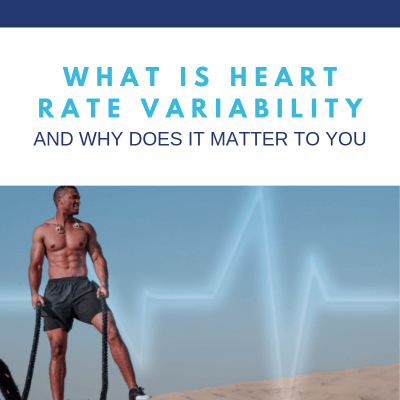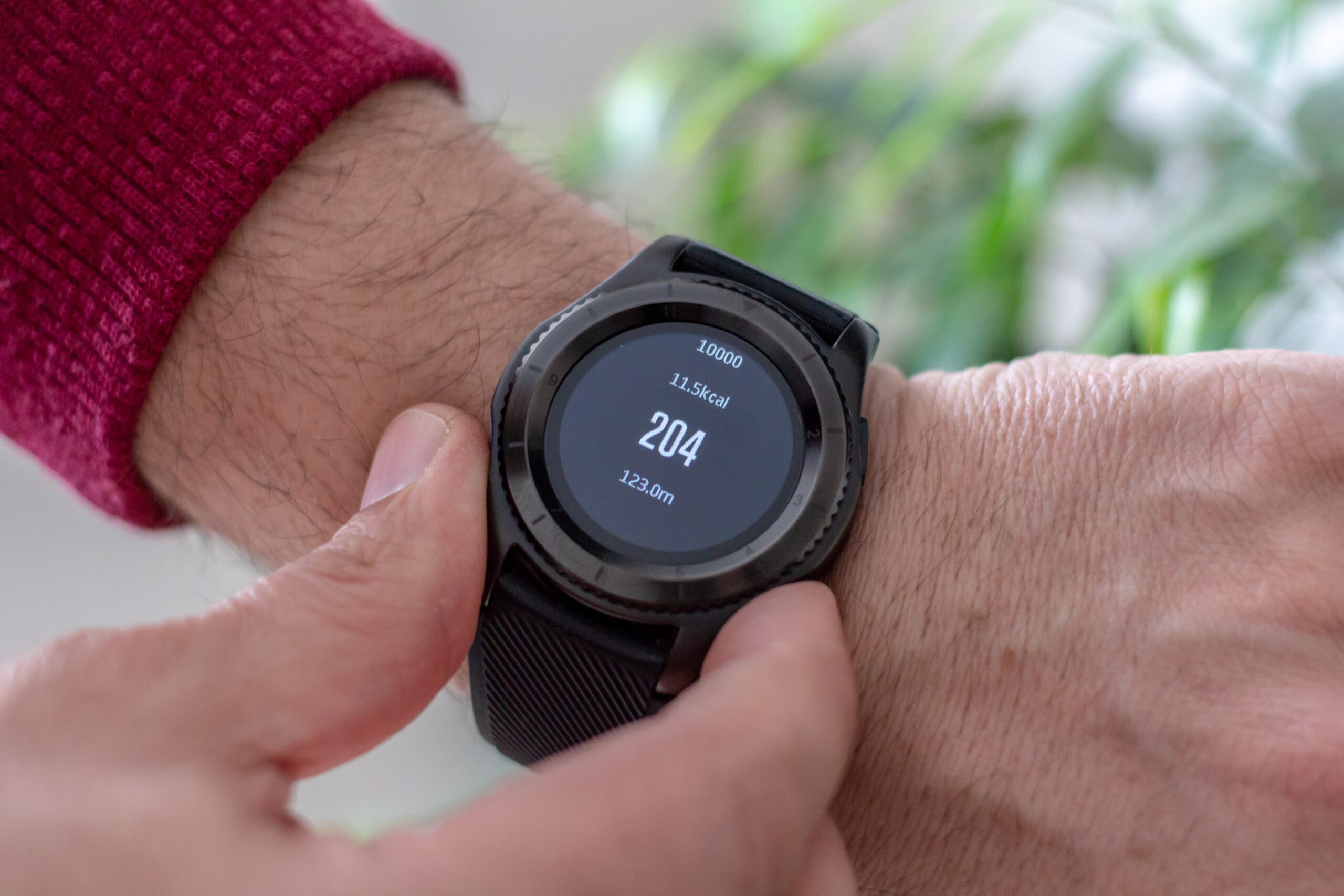
Wearable tech devices have been around for a few years now, and with each update, they get more advanced. These these cutting-edge tools are incredibly useful whether you’re a trained athlete, a workout enthusiast, or simply want to increase your awareness around your overall physical activity.
Now we can use the data from these devices to track our stress levels for optimizing our immune system. We can do this by removing triggers that can have a negative effect on our body’s natural ability to fend off disease.
Wearable devices have certainly evolved from their humbler beginnings as basic step counters, heart rate/activity trackers or reminder systems. Now they offer an immense amount of specific biometric data that can be actively interpreted for optimum performance.
This means you’ll have access to a slew of detailed metrics. These metrics can be analyzed in order to bring some precision into your decisions about your body’s function during both exercise, rest periods, and sleep. You can actually optimize your health in a much more precise way.
In fact, you can track and manage another key aspect of health: your stress level. Stress and immunity are intertwined. Using the information provided by wearable tech devices through direct awareness of your body’s function means that can offer real-time cues into stress triggers. And as we all know these stress triggers have a huge impact on your immune system, positive and negative. The more you know about how your body is performing, the sooner you can pivot away from the stress negatives that can have a serious impact on your immune system.
Track Your Physiological Data On A Wearable Tech Device
You no longer have to guess what’s happening inside your body or how to improve your performance. Tracking your physiological data on a wearable tech device, and use it as a tool for specific modifications to your behaviors, diet, or environmental factors,
Biomarkers – such as Heart Rate Variability (HRV), blood volume pulse, blood and muscle oxygenation, are accessible through wearable tech devices. These biomarkers add a whole new dimension to your awareness (and adjustment) of your body’s performance.
The coolest part? Many devices are also hard at work while you sleep, busily detecting important metrics. These devices give you fascinating and useful details about sleep quality and patterns. Both sleep quality and patterns have an incredible impact on your body’s overall performance day or night. What’s more, this information speaks volumes about your overall stress level. All the while, your immune system could be really struggling as a result.
Let’s take a closer look at biomarkers and the way we can learn extensive detail through current wearable tech devices.
Learn Your Levels: Establish Your Biometrics Baseline
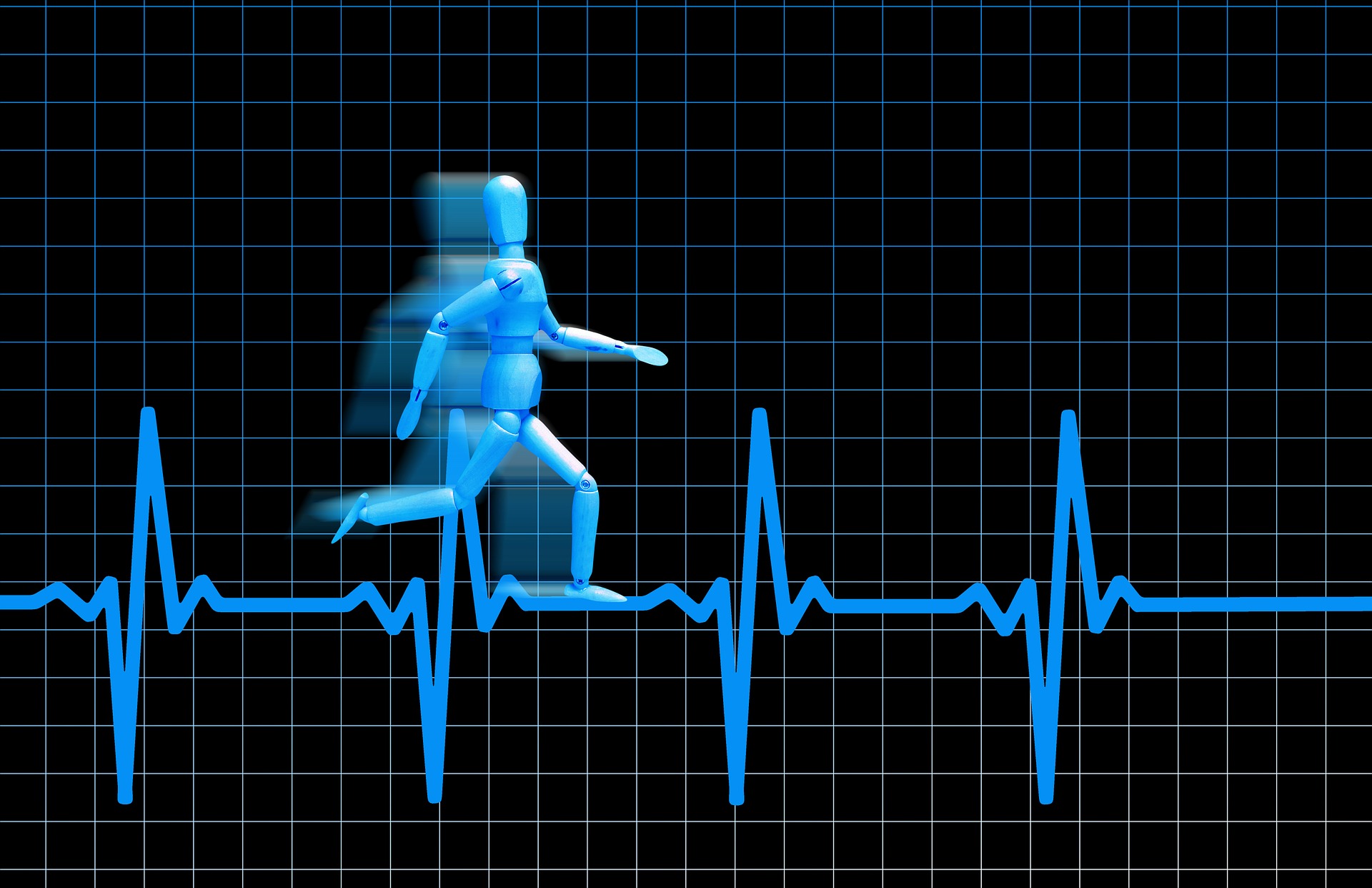
The more you know about your body’s performance during activity, rest, and sleep, the more you’ll be able to exert control over improvements that will get you closer to your peak performance. You can be leverage data that points to excessive stress levels or stress-relieving activities or routines that will strengthen your immune system, too.
The actionable insights that come from the data on your wearable tech device put the power in your hands.
Biomarkers related to heart activity, in particular, are some of the most essential data collected from a wearable tech device. This can effectively allow you to see what’s happening within your cardiovascular system.
You can then monitor new activity to compare values when this baseline activity has been established. Plus, you can locate points of stress that can be reduced thanks to this monitoring process.
Wearable tech devices that measure your body temperature (even while you sleep, such as the Oura Ring) deliver data related to your sleep performance. By comparing that value to values from earlier nights, it indicates your body temperature baseline and any variations from it. That means that you can use that data to make precise adjustments as needed.
Simply put: remove a lot of guesswork by learning your levels and establishing a baseline. Now you can paint a far more complete picture of your body’s performance. Using this data, then, provides actionable insight to make strategic adjustments in your behaviors, diet, or environment. All of that can improve your physiological performance.
Wearable Tech Results: What We Can Learn From Heart Rate Variability Data
A person with a healthy heart – and without a pacemaker – has variability in their heart rate, both in the pace of beats and in the interval between the beats. For example, if your resting heart rate is 60 beats per minute, your heart isn’t beating every second on the second. The interval varies just slightly between each beat.
If you’ve ever seen an electrocardiogram (ECG) reading, you’ve noticed subtle differences in the distance between the beat measurements. This indicates that both branches of the autonomic nervous system are working well in a healthy heart.
A well-functioning parasympathetic nervous system assists the heart to slow down during rest. If the heart rate and HRV are still elevated while at rest, this may be an indicator that the autonomic nervous system is not functioning properly, creating more stress on your system. Locating and modifying these points of stress is a great way to use the data gleaned from your wearable tech. It puts a bit more control into your hands. As a result, you can make real-time changes that will impact you right away.
I’ll give you a great example of how this data can be used. I wear a tech device to regularly track my biomarkers, and I saw a change in my HRV and stress levels that made me look twice. My wife and I like to enjoy date nights twice a week, and I noticed that the next day, my HRV and stress levels were way up. It took me a minute, but I realized that it was the glass of red wine that I was having with dinner that was causing this effect. So now I opt out of the glass of wine and removed that negative effect.
Can your Garmin Smart Watch detect coronavirus?
Garmin and scientists from top universities and institutes around the world are actively researching whether wearable devices can help identify early indications of coronavirus.
“The premise is actually quite simple. (1) An elevated heart rate is an early sign of a common cold, the flu or coronavirus. (2) Garmin smartwatches have built-in heart rate monitoring at the wrist. Put the two together and society could have an extremely helpful tool for early indications of the virus on a mass scale.” REF
We are just at the forefront of what we can do with wearable tech and all of the data provided to us.
Wearable Tech Results: What Sleep Data Can Tell You About Your Body
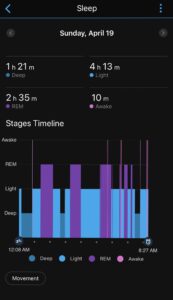
In the dark ages (or probably even a lot more recently) we used to head to bed and hope for the best, shooting for about eight hours if we were lucky. Perhaps we knew we weren’t sleeping well because we felt like total garbage the next day. And we had a hard time concentrating on pretty much anything. Or maybe we slept great one night, and not-so-great for the next two nights, and had no idea why.
It was a pretty good mix of guessing, making assumptions, and blindly trying different things to figure it out. I’ve even heard of some people just kind of resigning themselves to the idea that well, they’re just “not a very good sleeper.” So untrue!
With wearable tech devices hard at work even while we sleep, sensors that track body temperature, heart rate, blood and muscle oxygenation (among other things) deliver a lot of valuable information. This incredible information can uncover clues for helpful insight that you can then use to troubleshoot.
The Oura Ring and Garmin Watches are high-performing devices that collect biometric data about your body’s sleep performance. This is hugely valuable. You can uncover otherwise hidden patterns that have a serious impact on your waking hours and overall health.
SLEEP STAGE TRACKING (REM, DEEP, LIGHT)
Tracking your nightly sleep cycle delivers huge insight as your brain makes its way through the three individual stages of sleep. Interruptions within these cycles, plus the actual timing of deep, REM, light sleep, and possible awake time during the night can point to areas that can be corrected.
Here are a few other key ways that the wearable tech can deliver important data about you.
- RECOVERY OPTIMIZATION
- RESTING HEART RATE
- HEART RATE VARIABILITY (HRV)
- STRESS LEVELS
- CALORIES
- BODY TEMPERATURE TRENDS
- RESPIRATORY RATE
- DAILY ACTIVITY GOAL
- ALWAYS ON – DAYTIME ACTIVITY TRACKING
- STEPS AND CALORIES
- INACTIVITY ALERTS
- ACTIVITY BALANCE
SLEEP RESULTS: WHAT TO DO WITH THEM
When it comes to sleep data, any patterns that demonstrate a problem can be used to troubleshoot your way towards a better night’s sleep. You can make precise adjustments to behaviors, diet, and environmental factors.
For example, if your device reports a rise body temperature around 2 am for about two hours, this might point to some easy-fix issues in the room. Try wearing lighter clothes to bed but adding an extra blanket, which is easily removable without much effort. Or, add a fan to the equation. Track your new results for the next few days.
The point is this: listen to what your body is telling you with the help of data collected while you’re asleep. It’s a key step to making the kinds of adjustments that will improve both the quality and the duration of your sleep.
The human immune system is remarkably flexible and resilient – but as we age, as with everything else, our bodies’ ability to cope with stressors can lead to changes in immune response. That means that what worked for us in our 20’s and 30’s might require additional adjustments. Quite frankly, no matter what the age, sleep is incredibly important for total body health.
Sleep data provides us with real-time information to alert and inform us of both the cause and the effect of sleep issues and the cascading effects on health. It’s in the sleep data these wearable tech devices really shine.
You can read more about using wearable tech devices to improve your sleep quality and quantity here.
Wearable Tech Results:
How To Use Your Muscle Ox % (or SmOx%) Data

If you work out a lot and you’re using a wearable tech device, take a look at versions that measure another important biomarker: Muscle Ox %.
Muscle Oxygenation Percentage is essentially the balance between oxygen delivery and oxygen consumption within the muscle tissue. To simplify, oxygen delivery is the amount of oxygen available for use within the system. It’s the oxygen you’re taking in while you work out. Oxygen consumption describes the efficiency of the muscle as it uses that available oxygen. Muscle Ox % varies, but most people will exhibit levels between 50% to 70% when at rest.
Moxy Monitor
The Moxy Monitor was designed for anyone who wants to maximize their exercise performance. This smart device measures the Muscle Ox % while muscles are under exercise or athletic stress.
The Moxy Sensor (within the Moxy Monitor System) utilizes light-emitting diodes and photodetectors, creating a spectrometer that measures muscle oxygen. It’s totally portable, water-resistant, and weighs less than a sports watch. The internal data recording allows Moxy to be used even where radio transmission of data is difficult (like underwater). It’s designed to measure muscle tissue through up to 12mm of fat layer thickness.
So how do you use this information? Glad you asked. As you’re working out, the Muscle Ox % being monitored is guiding your training process by knowing exactly how your muscles are handling the workout. If the Muscle Ox % is balanced, you’re training at a level that’s steady and sustainable.
Rising Muscle Ox % levels mean that your muscles are consuming more oxygen than what’s being delivered by your blood flow, and that means that you’re reaching capacity on muscle activity.
Avoid Injury Risks With Precision Data
You won’t need to guess if you’re in the danger zone with your workout. Your wearable tech device sends you data that indicates that your muscles are consuming a lot more oxygen than what’s being delivered. This means that you’re training at a pace that’s not sustainable – you’re burning out and risking injury.
You can avoid that by paying close attention to the recovery phase.
You entered the recovery phase once your tracker reflected lowering levels. Your device is tracking data that points to less oxygen use by the muscles and more available oxygen within the blood flow. This is the safe zone after a training period.
Tracking this Muscle Ox % data in real-time makes it possible to adjust your athletic training by operating from a place of knowledge rather than a feeling. It means that you can now build peak performance with precision thanks to biomarkers. You can also lower the risk of painful or damaging muscle fatigue that could take you out for a few days (or worse).
WHAT TO DO WITH THE MOXY MONITOR DATA
You can make precise changes, thanks to the wide range of real-time data about your muscle performance. For example, some athletes discovered that they were lacking in the warmup process, which actually decreased their performance and increases the chance for injury. The physiological data was visible, trackable, and actionable.
Having your hands on this level of specific biometric detail provides insights on the overall intensity and fatigue level during any workout. Here’s a visual summary of this information.
If you want to learn your levels and establish a baseline for your typical Muscle Ox % during workouts, get started with a basic workout. Choose one that you’re already really accustomed to doing from start to finish, including recovery time. Maybe it’s one of your easier sessions that you can then use as a performance guide to measuring your general muscle and blood flow biomarkers. Pay attention to your sleep factors, Heart Rate Variability and heart rate patterns across the next few days to see how and when your workout routine shows its effects in those areas.
If there’s a data spike that is leading to a negative (such as disrupted sleep, increased HRV the following day, and so forth), adjust the time of day for your workout if that’s an option for you and note the effects of that change.
Wearable Tech is Just A Start
Wearable tech devices deliver fascinating physiological data, and it can be eye-opening.
What to do if you uncover concerning patterns from your wearable tech device? Consult with your physician – no two bodies are the same. Don’t delay bringing this data to the doctor’s office if you see something that may point to a larger issue. A specific factor could be present, which requires medical attention.
Today’s technology provides fantastic actionable insights a day-to-day level.
Hopefully you’re feeling good about your wearable tech device and enjoying the hands-on approach to biomarker data. However, it may feel like the data is kind of daunting to interpret. I’m happy to work with you in tandem with your new technology.
Now more than ever, we are looking for ways to improve our health and our immunity, which means that wearable tech devices fit right into this discussion. This physiological data gives us clear insight into what our bodies are doing even during sleep. You might be surprised to find a few unknown spikes or triggers that, once removed, will result in a more optimized immune system. Which of course means an overall greater sense of well-being.
THE POWER OF WEARABLE TECH, PRECISION PERFORMANCE DATA INTERPRETATION, AND APPLICATION WITH AN EXPERT
Put the power in your hands with wearable tech devices and Precision Performance Data Interpretation and Application with me. Get started here.
Together, we can develop your action plan based on the information that your tech device is giving you, and we can get you to peak performance for optimized health.
Upgrade to Male™ 2.0 – Schedule a Consult!
You’ll get access to a genetic-based report and analysis, along with a private consultation. This private consultation will put you on track to your ultimate health.
With the Male 2.0 Method, I test your DNA, interpret the results, and create a customized strategy just for you. This plan is specific to YOUR individual genes and lifestyle. It will improve every area of your life, from your health and professional productivity to your overall longevity and total wellbeing. Male 2.0 gives you the actionable tools you need right now. It reveals what you need to customize and design your future limitless self.
Click here to learn more about the lifelong benefits of a personalized genetics consultation and epigenetic coaching program.
Want more tips to optimize your health? Listen to the latest podcasts. Click HERE
I look forward to working with you to take your health goals to the next level.
Ready to take the next steps?
Download the Blueprint
Schedule a Call
**************************
COMING SOON TO AMAZON
 In Male 2.0™, Dr. Tracy Gapin has turned everything we once thought we knew about men’s health and performance upside down. The old model of how to be “a man” is broken. A man who works himself to death. Unfortunately, a man who tries to NOT get sick but isn’t really healthy either. And a man who takes a pill for every ill but is never really cured. That was Male 1.0. Now, imagine being THE MAN ─ owning your performance in the bedroom, the weight room, and the boardroom. Living a fully optimized life. Becoming limitless. This is Male 2.0!
In Male 2.0™, Dr. Tracy Gapin has turned everything we once thought we knew about men’s health and performance upside down. The old model of how to be “a man” is broken. A man who works himself to death. Unfortunately, a man who tries to NOT get sick but isn’t really healthy either. And a man who takes a pill for every ill but is never really cured. That was Male 1.0. Now, imagine being THE MAN ─ owning your performance in the bedroom, the weight room, and the boardroom. Living a fully optimized life. Becoming limitless. This is Male 2.0!
Tracy Gapin, MD, FACS is a board-certified Urologist, Men’s Health Expert, Author, and Professional Speaker. Using state-of-the-art biometric monitoring, nutrition and lifestyle intervention, Dr. Gapin coaches Fortune 500 executives and evolutionary leaders of business, sports medicine, and high performance. He specializes in cutting-edge precision medicine with an emphasis on epigenetics, providing men with a personalized path to optimizing health & performance.

